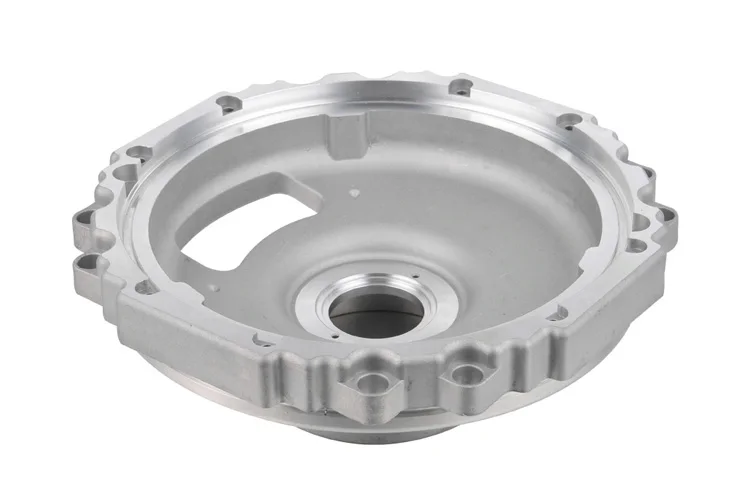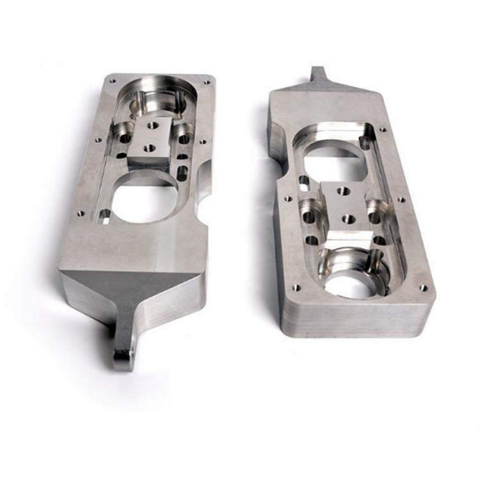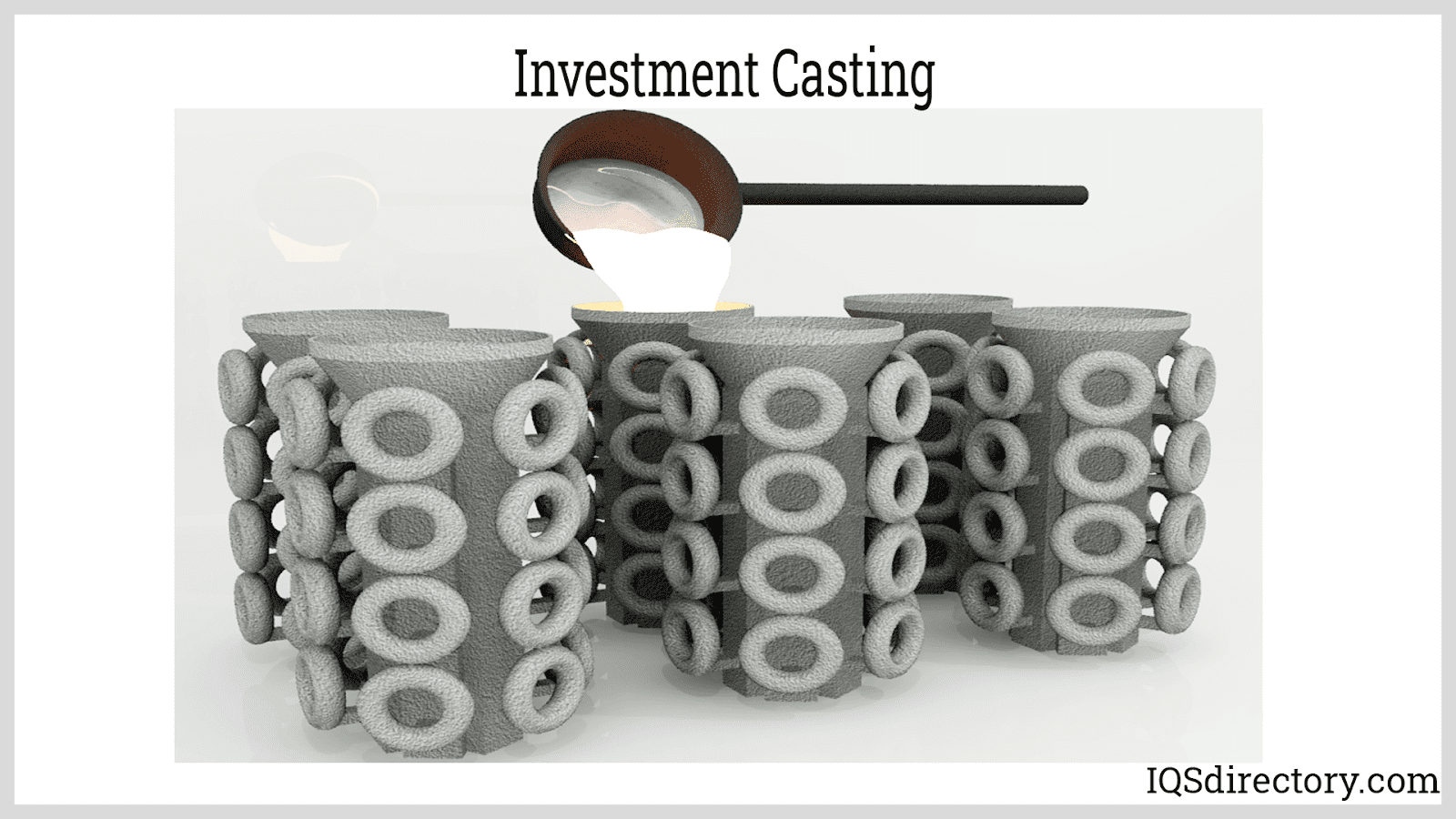Recognizing the Ecological Benefits of Light Weight Aluminum Factory Techniques
Light weight aluminum factory strategies play a vital role in advancing sustainability within the manufacturing sector. By carrying out sophisticated reusing approaches and energy-efficient techniques, these techniques greatly decrease waste and carbon footprints. Cutting-edge casting approaches better enhance source conservation efforts. As industries increasingly prioritize environmental responsibility, understanding the full effect of these methods becomes essential. What specific improvements are leading the means in this change?
The Duty of Light Weight Aluminum in Sustainable Manufacturing
Although many materials add to lasting manufacturing, light weight aluminum attracts attention as a result of its distinct residential properties and recyclability. This lightweight metal is not only durable yet additionally possesses exceptional rust resistance, making it an optimal selection for numerous applications, from auto to building. Its high strength-to-weight ratio leads to energy financial savings throughout transportation and usage. Light weight aluminum can be reused forever without losing its inherent high qualities, promoting a round economic climate.
The production procedure of aluminum has actually advanced, integrating energy-efficient approaches that lower carbon impacts. By making use of sustainable energy sources, producers are progressively reducing the ecological impact linked with light weight aluminum production. Furthermore, using recycled aluminum needs considerably less energy contrasted to extracting and fine-tuning primary aluminum, bring about lower greenhouse gas exhausts. As sectors seek lasting options, light weight aluminum's convenience and environmentally friendly qualities setting it as a crucial product in the pursuit of greener manufacturing practices.
Advanced Recycling Techniques in Aluminum Foundries
Advanced recycling strategies in aluminum factories are changing the means scrap aluminum is refined and recycled. Cutting-edge techniques, such as closed-loop recycling systems, enable factories to redeem light weight aluminum from production waste and obsolete products effectively. These systems lessen worldly loss and enhance the top quality of recycled aluminum, making it a sensible option to main light weight aluminum manufacturing.
Additionally, advanced arranging innovations, including automated optical sorting and X-ray fluorescence, enhance the splitting up of light weight aluminum from various other products, ensuring higher purity degrees in recycled results. This accuracy decreases contamination, which can jeopardize the integrity of the last item.
Additionally, the integration of advanced melting modern technologies, such as induction melting and energy-efficient furnaces, simplifies the recycling process, reducing energy consumption. Jointly, these technologies add to a more sustainable light weight aluminum market by decreasing dependence on virgin products and lowering greenhouse gas discharges associated with aluminum production.
Power Performance Improvements in Foundry Operations
Energy effectiveness enhancements in light weight aluminum shop procedures can considerably improve sustainability practices. Executing waste warm recovery systems permits factories to repurpose excess power, decreasing total power consumption. In addition, advancements in procedure automation simplify procedures, resulting in reduced waste and maximized resource use.
Waste Warmth Recovery
Carrying out waste heat recovery systems in light weight aluminum shops considerably improves energy effectiveness by capturing and reusing excess thermal power generated during manufacturing processes. These systems help with the conversion of thrown away warm right into usable energy, which can be used for numerous applications within the foundry, such as preheating materials or powering tools. By recovering warm that would otherwise be eliminated right into the environment, foundries can noticeably decrease their general power intake and greenhouse gas exhausts. This technique not only decreases functional costs but also advertises sustainable techniques within the sector. Additionally, the fostering of waste warm recuperation technologies aligns with regulative standards targeted at minimizing ecological influence, making it a crucial component of modern aluminum shop procedures.
Process Automation Conveniences
Automating procedures in light weight aluminum foundries can considerably boost power performance by optimizing production workflows and decreasing waste. By executing sophisticated innovations such as robotics and artificial intelligence, factories can improve procedures, reducing unnecessary energy consumption. Automated systems help with accurate control over temperature and product handling, ensuring that energy is used just when required. In addition, real-time tracking enables instant modifications, minimizing the threat of energy loss. The combination of automation not only boosts efficiency however likewise reduces operational prices, making foundries much more affordable. Because of this, these energy-efficient methods contribute considerably to sustainability objectives, lowering the environmental impact of light weight aluminum production while fulfilling enhancing market needs - Aluminum Foundry. Enhanced power efficiency via automation stands for a crucial step towards greener shop procedures
Decreasing Waste Via Ingenious Casting Approaches
Ingenious spreading methods play a crucial role in reducing waste in aluminum factories. Techniques such as sophisticated molding and the application of recyclable materials significantly lessen production scrap. These techniques not only improve efficiency but likewise add to a much more sustainable production process.
Advanced Molding Techniques
As markets increasingly prioritize sustainability, advanced molding strategies in light weight aluminum factories arise as efficient services for reducing waste. These ingenious approaches, such as 3D printing and accuracy mold production, considerably enhance the effectiveness of the spreading process. By using computer-aided style (CAD) and simulation innovations, makers can optimize mold geometry, lessening product use while keeping product integrity. Furthermore, progressed strategies make it possible for the production of complex forms that traditional approaches can not attain, lowering the need for additional machining and thus reducing scrap material. The adaptability of these methods permits quick prototyping, further reducing preparations and power intake. In general, the application of innovative molding strategies stands for an essential action toward environmentally liable light weight aluminum production, lining up with worldwide sustainability objectives.
Recyclable Product Use
Recyclable products play a pivotal duty in decreasing waste within light weight aluminum factories, transforming the spreading landscape via their efficient use. By integrating scrap browse this site light weight aluminum and various other recyclable components click to find out more right into the manufacturing procedure, shops can considerably lower the need for virgin materials. This not just saves natural deposits but additionally reduces power usage related to mining and refining. Innovative spreading approaches, such as die casting and sand casting, enable smooth combination of these products, making certain high-grade results. Furthermore, making use of recyclable products promotes a circular economy, where resources are continuously recycled and repurposed, decreasing landfill payments. Ultimately, the tactical usage of recyclables boosts sustainability while promoting cost-effectiveness in light weight aluminum factory procedures.
Reducing Production Scrap

Life Cycle Assessment of Aluminum Products
Light weight aluminum is commonly identified for its long lasting and lightweight buildings, a detailed Life Cycle Evaluation (LCA) reveals the ecological impacts connected with its usage, manufacturing, and disposal. The LCA process analyzes the energy usage, greenhouse gas exhausts, and source exhaustion linked to light weight aluminum products from removal of bauxite ore to end-of-life administration. Main aluminum manufacturing is energy-intensive, often counting on fossil fuels, which adds significantly to carbon footprints. On the other hand, reusing light weight aluminum supplies significant environmental benefits, as it utilizes just a fraction of the energy required for key production. Additionally, the reusing process reduces garbage dump waste and saves all-natural sources. The LCA additionally thinks about the item's longevity and possibility for reuse, highlighting the relevance of sustainable layout. Overall, comprehending the life cycle influences of aluminum products is important for making informed decisions that prioritize ecological sustainability within the market.
Case Studies: Successful Lasting Practices in the Market
The aluminum industry has started to accept innovative lasting practices that address the ecological difficulties recognized in Life process Analyses. One noteworthy instance is a leading shop that executed a closed-loop recycling system, significantly reducing waste and power intake. By reusing scrap aluminum in manufacturing, the center achieved a 40% reduction in its carbon footprint.
One more instance includes a producer that took on renewable energy resources, powering its operations with solar and wind energy - Precision aluminum casting. This change not just reduced greenhouse gas emissions but likewise improved the business's track record amongst eco conscious consumers
In addition, a 3rd factory has actually purchased advanced casting methods, which maximize product usage and decrease issues, even more decreasing resource consumption. These case researches illustrate that the light weight aluminum industry is qualified of integrating lasting methods, showing both ecological obligation and financial practicality, eventually contributing to a more sustainable future.
Often Asked Inquiries
How Does Light weight aluminum Contrast to Various Other Metals in Sustainability?
Aluminum is generally taken into consideration more sustainable than several steels because of its recyclability, reduced power needs for manufacturing, and reduced environmental effect. Its lifecycle efficiency goes beyond that of steel and copper in numerous applications.
What Is the Carbon Footprint of Aluminum Foundry Processes?
The carbon footprint of aluminum foundry procedures differs, usually varying from 4 to 15 statistics lots of CO2 per lots of light weight aluminum generated. Elements affecting this consist of power resources, technology, and the efficiency of procedures.
Exist Wellness Threats Related To Aluminum Foundry Workflow?

What Are the Prices Connected With Sustainable Light Weight Aluminum Techniques?
The costs associated with sustainable light weight aluminum techniques include higher initial financial investments in modern technology, potential rises in functional costs, and recurring upkeep. These are often countered by lasting cost savings and lowered environmental effect.

Just How Does Aluminum Recycling Impact Citizen Communities?
Light weight aluminum recycling favorably influences neighborhood areas by creating jobs, minimizing garbage dump waste, and lowering power expenses. It cultivates economic development and advertises environmental stewardship, resulting in healthier living conditions and boosted area engagement in sustainability initiatives.
Additionally, the use of recycled light weight aluminum needs considerably less power contrasted to extracting and fine-tuning primary light weight aluminum, leading to reduced greenhouse gas exhausts. Advanced reusing strategies in aluminum shops are revolutionizing the way scrap light weight aluminum is processed and reused. aluminum casting. Applying waste heat recovery systems in light weight aluminum foundries significantly boosts power efficiency by catching and recycling excess thermal energy generated during production processes. Automating processes in aluminum factories can greatly enhance energy efficiency by optimizing production workflows and reducing waste. The carbon impact of light weight aluminum factory procedures varies, typically ranging from 4 to 15 statistics tons of CO2 per load of light weight aluminum created